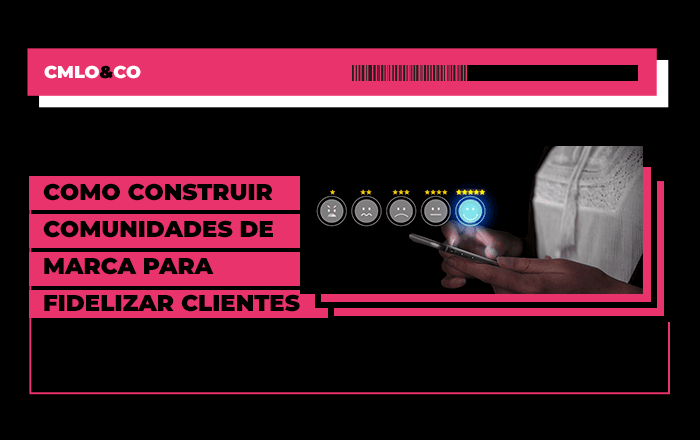In an increasingly globalized and competitive business world, building a strong and recognizable brand is fundamental to the success and sustainability of any business.

Brand positioning plays a crucial role in this context, allowing companies to differentiate themselves from their competitors, stand out, create a meaningful connection with consumers and build a unique identity in the market.
In this article, you'll learn how effective brand positioning is a marketing strategy capable of differentiating a successful company from one that falls behind, as well as tips on how to consolidate your brand in the market. Check it out!
What is brand positioning?
We call brand positioning the process of creating a unique image or identity for a product, service or company in the minds of consumers. In other words, it's how a brand is perceived by them in relation to its competitors and what value it offers its target audience.
The aim of the strategy is to establish a distinct and desirable position in the minds of consumers, influencing their purchasing decisions and building brand loyalty.
The importance of brand positioning
A strong and clear brand positioning can be the decisive factor that leads a consumer to choose one product or service over another.
It helps to build loyalty and recognition, provides strategic direction for all the company's marketing and communication initiatives, and also brings other long-term benefits to the business:
Market differentiation
In a saturated and highly competitive market, the differentiation is essential for a company to stand out from the competition.
Effective brand positioning allows a company to establish a unique and distinctive identity, clearly communicating what makes it different and better compared to its competitors.
This attracts consumer attention and also creates a positive and lasting brand perception.
Building brand loyalty
Once consumers recognize and value a company's identity and values, they are more likely to develop an emotional connection and loyalty to the brand.
And consistent, authentic positioning creates a relationship of trust and familiarity with consumers, encouraging repeat purchases and the recommendation of the brand to others.
Increased perception of value
As we mentioned earlier, one of the objectives of brand positioning is to significantly increase the perception of value of the product or service in the eyes of consumers.
By highlighting their unique benefits and distinctive features, consumers are more willing to pay a premium. premium price and invest in the brand, which can result in better profit margins and financial sustainability for the company.
Facilitates consumer decision-making
Faced with so many options available on the different markets, it's normal for consumers to feel overwhelmed by the choices.
However, clear and coherent positioning facilitates consumer decision-making by providing a clear direction as to why they should choose one brand over another.
Sustainability and long-term growth
It should also be noted that brand positioning is not just a short-term strategy, but a long-term approach to business growth and sustainability.
By building a strong and consistent brand identity, companies can establish a lasting presence in the market, adapt to changing consumer preferences and continue to grow sustainably.

Types of brand positioning
Strategic positioning can be achieved in different ways, depending on the type of business, the business model and the characteristics of the market in which the company operates.
Below, we will detail the main types of positioning, exploring their characteristics, advantages and challenges. Take a look:
Positioning by price
This type of positioning focuses on offering products or services at lower prices than competitors. It is, in fact, a common strategy in highly competitive markets, where price is a decisive factor for consumers.
However, it is important to ensure that quality is not compromised, as this can negatively affect brand perception.
Brand positioning by monopoly
Monopoly positioning occurs when a brand is the only one on the market offering a particular product or service. This can be achieved through technological innovation, patents or exclusive agreements.
In this type of positioning, the brand has the advantage of setting prices and establishing quality standards, but it also faces the challenge of maintaining innovation and relevance in the market.
Positioning by product or service benefit
This type of brand positioning highlights the unique benefits and characteristics of the product or service.
In practice, it focuses on communicating how the product or service meets consumers' needs and desires in a way that competitors cannot.
To be effective, however, it is important to clearly identify and communicate the distinct benefits so that consumers see value in the brand.
Competitive differentiation
Competitive differentiation involves creating a unique and memorable brand identity that stands out in the market. This differentiation can be achieved in different ways, whether through design, quality, customer service or company values.
Although more complex, the strategy of competitive differentiation allows the brand to build an emotional connection with consumers and establish a strong and lasting position in the market.
How can you consolidate your brand in the market?
In order to consolidate your brand in the market and ensure effective positioning, it is essential to follow a few important steps:
- Understand your market well: research and analyze the market in which you operate, identifying trends, consumer needs and opportunities for differentiation;
- Know who your audience is: know your target audience, their preferences, behaviors and needs. This will allow you to personalize your marketing strategies and communicate more effectively with your consumers;
- Know your competition well: analyze your competitors, identifying their strengths and weaknesses. In this way, you will identify opportunities for differentiation and develop competitive strategies;
- Know your customers' expectations and try to add value to your product or service: offer something unique and relevant to your target audience;
- Create emotional connections with consumers: develop authentic and engaging communication, building an emotional connection with consumers and encouraging brand loyalty.
Conclusion
In short, brand positioning is a powerful tool for differentiating your company in the competitive marketplace and building a meaningful connection with consumers. When done correctly, it can elevate a company above the competition, achieving long-term success.
For companies looking to improve their brand positioning, CMLO&CO, full service marketing and advertising agencycan be the ideal partner to navigate this complex and rewarding process.
With a personalized and strategic approach, CMLO&CO offers impactful communication solutions to help your brand shine in the market. Contact us and consolidate your market position.







